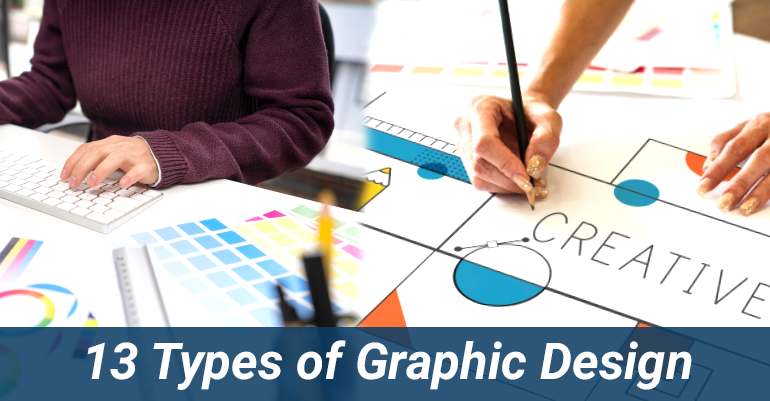If you have an eye for design that extends beyond your wardrobe and home décor, you might be considering a career in graphic designs. While you may know that graphic designers use technology to create their work, you might not know much about the industry itself or the different types of graphic design you could pursue.
That’s where we come in – we’re here to provide you with a comprehensive understanding of the graphic design field. We’ll explore the fundamental purpose behind graphic designs, the recent changes and innovations in the industry, and the diverse types of graphic design that are available for you to explore and pursue as a creative professional. Whether you’re a seasoned designer or just starting out, this information will help you gain a deeper understanding of the exciting and ever-evolving world of graphic design.
What is graphic design?
Graphic design is a creative discipline that involves using visual elements to communicate information, ideas, and messages to an audience. It combines the use of typography, imagery, color, and layout to create a visually engaging and effective design. Graphic designs can be used to create a wide range of products such as logos, websites, posters, brochures, product packaging, and more. It is an essential part of branding and marketing, as it plays a key role in creating a visual identity and communicating a brand’s message to its target audience. Graphic designers use various tools and software to create their designs, and often work in collaboration with clients, marketing teams, and other professionals to ensure their designs meet the needs of the project and the goals of the organization.
Then and now: How the graphic design field has evolved :
Over time, the graphic designs field has undergone significant changes and evolution. From the early days of print design to the present-day digital age, the industry has adapted to technological advancements and changing consumer preferences. Today’s graphic designers have access to a vast array of software and tools that make it possible to create more sophisticated and complex designs than ever before.
Since the advent of popular design software such as Adobe’s Photoshop® and Illustrator® in 1987, graphic designers have been blending their design skills with technology to create innovative designs. As technology has evolved, the graphic designs industry has embraced new tools and software, giving today’s designers a vast array of resources at their disposal. By keeping up with the latest developments in design software, graphic designers can position themselves for continued growth and success, regardless of their specific area of focus within the industry.
In the past, graphic design was limited to print media such as newspapers, magazines, and billboards. Today, digital media has become an integral part of graphic designs, with designers creating designs for websites, social media platforms, and other digital channels. In addition to the traditional skills of typography, layout, and color theory, modern graphic designers must also have a strong understanding of user experience, coding, and web design.
With the rise of globalization, there has also been an increasing demand for multicultural design that appeals to a diverse range of audiences. This has led to an emphasis on inclusive design and cultural sensitivity in the industry.
By staying ahead of the curve in terms of design software, graphic designers can remain competitive in an ever-changing industry. With the right combination of design skills and technological proficiency, graphic designers can continue to expand their careers and stay at the forefront of this exciting and dynamic field.
Overall, the graphic design field has come a long way from its humble beginnings and will undoubtedly continue to evolve as technology and consumer preferences continue to change.

